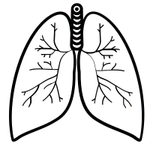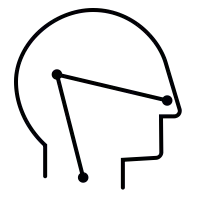Osteopathy FAQs
About Osteopathy Clinic at Natural Health Clinic of Halton?
Osteopathy Clinic at Natural Health Clinic of Halton by Oakville Trafalgar Memorial Hospital are trained in a wide array of manual techniques some of which include joint articulation, myofascial release, visceral and cranial techniques aimed to reduce and resolve stress, strain, and dysfunction.
Babies and Children
Respiratory Illness
Ear, Nose and Throat Problems
Systemic Problems
How does it work?
Osteopaths work with their hands using a wide range of manual techniques according to the individual’s age, physique, and particular problem.
Techniques range from:
- Cranial-Sacral Therapy: This is the gentlest osteopathic technique, and it requires the most experience to use effectively. Osteopathic Manual Practitioners undergo years of intensive training. Through this training, their hands become sensitive to the cranial mobility and develop great precision in utilizing cranial technique.
- Gentle Articulations and Mobilizations that involves gently moving 2 joint surfaces. Before doing this, practitioners carefully prepare the soft tissues around the treatment area. They also move the patient into a position that will minimize, or eliminate the energy and force needed to perform the maneuver. Many patients find this technique less forceful than joint manipulations.
- Myofascial Release Therapy – The goal of myofascial therapy is to stretch and loosen the fascia so that it and other contiguous structures can move more freely, and the patient’s motion is restored.
- Soft-tissue Stretching Techniques to release muscle tension.
- Neuromuscular Release Techniques also called trigger point myotherapy. The American Academy of Pain Management recognizes this form of massage therapy as an effective treatment for back pain caused by soft tissue injury, Neuromuscular therapy consists of alternating levels of concentrated pressure on the areas of muscle spasm.
- Lymphatic Drainage Techniques to improve circulation throughout your body and enhance your immune system.
- Visceral Manipulation in which most patients treated feel only gentle pressure of the osteopathic manual practitioner’s hand. But the corrections are powerful enough to improve the mobility of an organ, improve blood flow, and help the organ function more effectively.
Do I Need a Referral from My Doctor?
No, it is not necessary to be referred by your physician.
What are the reasons for Visit?
There are numerous reasons to seek the help of an osteopath. Maybe you’re suffering from stiff, aching or dull lower back pain, perhaps at work or after driving you to feel sore and stiff. Do you put up with persistent leg pain or suffer regular headaches? At work whilst sitting at your desk are you in any discomfort, do your neck and shoulders ache? You don’t need to suffer any longer, osteopathy can help.
When is the best time to consult?
Prevention is better than cure, and it is often easier for a manual osteopath to treat underlying stresses and strains when there is no current pain. Indeed, you do not have to be in pain on the day of the treatment. Likewise, you do not have to wait for a particularly painful episode to settle before visiting a manual osteopath. Most back pain is easier to treat in its early stages.
How many treatments will I need?
Your manual osteopath should be able to give you an indication of the approximate amount of treatments needed after your first visit.It depends on how severe and complex your condition is. For some acute conditions, your manual osteopath will expect to see significant improvement and pain relief within 2-4 treatments.Problems that you have neglected or chronic conditions may require more regular osteopathic treatments.
What can I expect during my first visit?
Your initial assessment will take around 30-50 minutes.
Before your actual osteopathic treatment commences you will be asked some questions about yourself and your general health (both past & present), medical history including operations and illnesses, and any medications you are taking.
During the examination, you will be asked to perform certain simple movements so your manual osteopath can observe the effects of your condition. Further examination, such as joint mobility and muscle strength may also be conducted. The experienced manual osteopath will then use a highly developed sense of touch, called palpation, to identify any points of weakness or excessive strain throughout the body.
What should I wear for my Appointment?
Patients are generally advised to wear anything that makes them feel comfortable, loose fitting shorts or pants and a vest or workout top are always perfect.
Does It Hurt?
Osteopathy is usually painless but may be a little uncomfortable. Most people find osteopathic treatments to be gentle and relaxing. With some conditions, certain techniques may cause some discomfort but not normally more than you are already used to with your problem. Your manual osteopath will warn you if this is likely to be the case. Remember you are in control of the session and can ask the manual osteopath to stop or change to another technique at any time.
How will I feel after my appointment?
For 24 to 48 hours after the treatment you may experience some minor discomfort. This is a normal part of your body’s response to the osteopathic treatment. It is also common for the full benefit of the treatment to be felt after 2 to 3 days.
Is It Safe?
Osteopathy has been proven to be remarkably safe, much safer than taking painkillers or surgery. Your manual osteopath will explain possible risks of treatment and discuss any concerns you may have prior to commencing with treatment.
Any benefit during Pregnancy?
Osteopathy for pregnancy can ease some of the symptoms typically associated with pregnancy including:
- Aches and pains (back pain, neck and shoulder pain, muscular tension)
- Groin, lower abdominal pain or pubic symphysis pain
- Nausea and vomiting
- Heartburn
- Sciatica
Benefits for Babies and Children?
Cranial Osteopathy for babies and children is a gentle and non-invasive technique whereby the practitioner aids the body’s natural self-correcting mechanism to relieve trauma that may have occurred during birth.
The movement of the baby through the cervix in labor obliges the head to move in several specific directions whilst undergoing the powerful pressure of the contractions, this naturally causes some overlapping of the skull and compression. Some compressions may be relieved spontaneously after birth as the baby cries or suckles; however, this un-molding process is often incomplete, especially if the birth has been difficult. Babies who have experienced forceps delivery, long labor or cesarean birth often require the attention of a qualified manual osteopath.
How Does Cranial Osteopathy for Babies and Children Work?
Cranial osteopathy is very gentle, safe and effective. Specific gentle pressure is applied wherever necessary (not only on the head) to enable the inherent healing ability of the body to aid the release of stresses.
Reactions to treatment are variable, often the baby or child is very relaxed afterward and sleeps well. Others have a burst of energy after treatment, usually followed by a good night sleep. Occasionally the child may seem unsettled and merely because treatment may take a few hours or days to complete.
On average, 2 to 6 treatments are sufficient. This varies according to the severity of the actual problem and the age of the child.
What Is the Difference Between Osteopathy and Chiropractic Treatments?
Generally, manual osteopaths spend longer with each patient (on average 45-60 minutes) compared to chiropractors (on average 5-10 minutes). In addition, osteopathic patients generally require less frequent treatments, and their treatments are spaced out over a longer period of time, rather than once or twice weekly for chiropractors. Some chiropractors are known to require or encourage their patients to sign on for a course of 12 or 24 or more treatments, even for minor complaints like lower backache. Manual Osteopaths do not impose such requirements and depending on a person’s condition, some complaints may require just one or two treatments.
Below is an outline of the main similarities and differences between the two, but bear in mind it is from an osteopathy point of view; if you ask a chiropractor, you may get a different answer.
The Similarities Between Osteopathy and Chiropractic Treatments
- Founded in the USA in the late 19th century.
- Share a common philosophy about the importance of the integrity of the spine in ensuring good health. The primary treatment objective of both is to remove bodily aches and pain.
The Differences Between Osteopathy and Chiropractic Treatments
- Chiropractic treatment tends to emphasize on quick manipulations of spinal joints only (cracking the spine).
- Osteopathic treatment tends to involve rhythmic stretching, articulation, mobilization and manipulation on joints and muscles of the whole body.
- Manual Osteopaths are trained in cranial osteopathy (cranio-sacral therapy) which involves very subtle and gentle work on the skull without any clicking of the joints.
- Chiropractors use the title Doctor in front of their name whereas manual osteopaths don’t.
- Manual Osteopaths are able to perform assessment by visual inspection and palpation (feeling by hand).
- Chiropractors rely more on x-rays and MRI for diagnosis.






